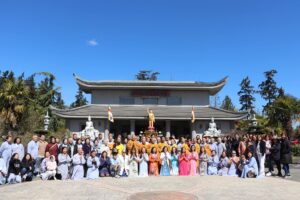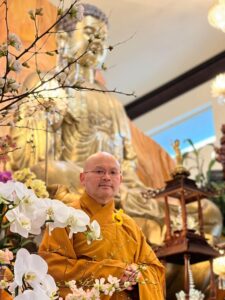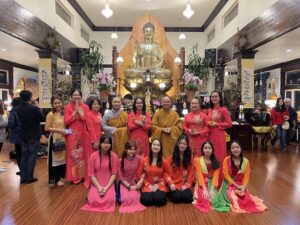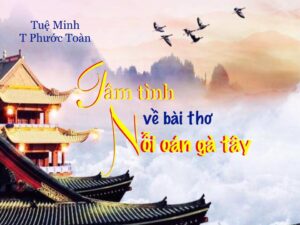An Bằng
miền quê mộc mạc
An Bang: A Rural and Rustic Place An Bang villagers are like most people in rural areas; they live simple lives. There are almost no factions, and, from the outside, there is no intrigue. Regardless of financial difficulty, the An Bang people are very humane, united, and knowledgeable. During cold winters, many families may lack food, clothes, and blankets. Nonetheless, if they have productive seasons, they are very generous, sharing food with neighbors or even strangers. According to the collective An Bang knowledge, most An Bang villagers lived in brick homes with red-tile roofs before 1968. Because the An Bang villagers were quite poor, the most stand-out properties were schools, temples, churches, and shrines. Around 1968, the Vietnam War brought destruction to the village, destroying much of the infrastructure and taking many lives. Of the surviving community, a small number of people migrated to Lang Co (Co Village), while the remaining villagers stayed to rebuild the wreckage. In the Red Fiery Summer of 1972, the Hue Radio Station announced that the province of Quang Tri was bombarded and was in desperate need of help. Despite being poor, the An Bang villagers and the surrounding region now known as Trung Dinh Hai pitched in whatever they could to help. Passersby fleeing from their wartorn homes did even need to speak when approaching homes in An Bang–the An Bang villagers were quick to donate rice or other dried foods to these refugees so that they could continue their journeys. In one specific instance, the writer recalls a day when the adults and older siblings were out working, leaving the writer and his sister, who now resides in Australia, to tend to the house and younger siblings. Several refugees approached the home that day, and when they did, the writer and his sister mimicked what they had seen their mother do. They scooped a can of rice and poured it into each bag as a gesture of empathy and compassion toward the refugees. Later, when the writer’s sister went to get rice to cook, she returned and told her mother, “We are out of rice.” The writer’s mother widened her eyes and looked at her in surprise, “I bought a lot of rice and filled the whole container a few days ago. Did it run out that fast? Did you two give away the rest?” Without scorn or disappointment, the writer’s mother sent the older sister off to buy two baskets of rice to replenish the supply. Like Quang Tri, Hue also suffered from the war with fatalities. And after 1975, a combination of financial plummets brought the An Bang villagers even more struggles. An economic crash strained the entire country. This was compounded by a characteristically unproductive fishing season. Several villagers migrated south out of desperation to feed their families by working as laborers. Others became beggars, traveling to Mid-Central Vietnam and South-Central Vietnam to ask for dried sweet potatoes and dried cassava chips to bring back to their families. The An Bang people were resilient in this time; they continued to forage and toil, and, eventually, they were able to settle abroad and find success. Many of them were able to send money home to family members living in An Bang village to build schools, temples, churches, tombs, and other charity work. The An Bang people became a proud cohort, reveling in their history and progress. Despite this, the media does not portray them in the same light. In newspapers, TV, or currently on YouTube, An Bang Village is painted as a village of superficial beggars that flaunt and showboat. There has been little rebuttal by the An Bang people to challenge this inaccurate protrayal. Rumors have gone undisputed and myths have turned into truths without any factual basis. This highlights the importance of reviewing the incredible refugee journey of the An Bang people. Under communist pressure, the An Bang people fled the country in various means. Some families evacuated with the Southern Vietnamese by military ships in 1975, while most others crossed the sea in the late 1980s and the early 1990s in small bamboo boats. These boats were a part of their daily lives and what they used to migrate to An Bang with Lord Nguyen Hoang. Within 10 years, about three-quarters of the An Bang population had crossed the sea to settle abroad. The actual journey across the treacherous waters was in itself a tremendous feat, as these small boats were not built to withstand the deep sea. Despite this, not a single boat was sunk or missing. Since the journey was an arduous and dangerous one, those who stayed back in An Bang were the children, the elderly, and those who chose to stay to care for their parents to practice the Vietnamese tradition of filial piety. The first generation that crossed the sea was mostly middle-aged and young single people. Those who traveled in the early 1980s settled in the United States, and some that left in the early 90s settled in other countries such as Canada and Australia. In the United States, many An Bang people have found Florida to be a favorable climate with its tropical weather. Others have settled down in cold-weather states like Colorado, Michigan, or Illinois. Later, more An Bang villagers settled abroad through the Orderly Departure Program, marriage, and international exchange education. Because the An Bang villagers continue to leave the village and settle abroad, the populations abroad continue to grow while the An Bang population in An Bang village becomes less and less. The first wave of the An Bang people who settled abroad generally have stable lives, with careers in factory work or self-employment in small businesses. Several young people found success in school with degrees in many fields such as science, education, doctoral degrees, medical doctors, lawyers, engineers, etc. No An Bang villager who has gone abroad has pursued a degree in politics. Starting in 1995, some people ventured into the nail profession. Much of the success of the An Bang people abroad can be attributed to their connectedness. In general, the An Bang people are generous towards each other and are very well-connected with each other. They love each other, and love to help each other get settled. For instance, in preparing for crossing the sea, if people were financially capable, they contributed money to purchase fuel. Those that weren’t were still able and encouraged to take voyages on the boats. In some cases, the boat owners provided everything and took their relatives and neighbors without asking for anything in return. A more modern example of the An Bang people’s compassion is the nail profession. Doing nails is a profession that requires skill, and many An Bang people have found success in it because individuals in the community are so willing to learn and teach from each other. A large number of An Bang people have even been able to open their own salons and expand their businesses. The An Bang people value the love of An Bang more than anything else. If you mingle with An Bang people, you will experience this firsthand. At first, you might feel lost because of the way they talk. Besides using An Bang idioms, they also have a particularly difficult to decipher accent that isn’t intuitive to the other regional dialects of Vietnamese. However, with some patience, you will find the An Bang people to be quite delightful. “Coming to An Bang” – a poem dedicated to the reader: When you come, you will recognize the beauty The bud of An Bang in the middle of the loved garden The fragrance spreads out all over Which brings the breath closer to the heartbeats It’s not just wearing the same color of shirt It’s also the lovely accent People say, “The An Bang accent is thick” But we cherish our homeland An Bang where people are ingenious, sincere, rustic but have good heart The religious practices lead to an affinity for philanthropy They are undeterred, and unforgettable The love is incomparable, They always guide and support each other No matter how rough the road is Always walking on it just like the water flowing through the bridge. Tuệ Minh Washington State, January 20, 2021




